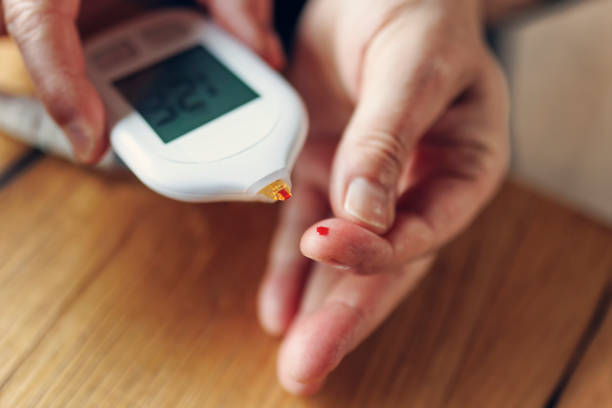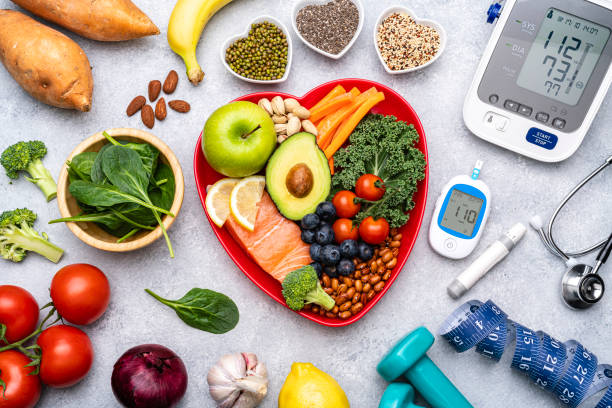Managing your blood sugar levels is very important—especially if you want to stay healthy without taking medication. If you’ve been told you have prediabetes, or if you simply want to feel better and prevent health problems, there’s great news: you can lower blood sugar levels without medication. By making small changes to your daily habits, you can take control of your health in a natural way. In this guide, we’ll show you simple, safe, and proven methods that fit into everyday life—no pills required.
Why Lowering Blood Sugar Naturally Matters
When your blood sugar is too high (a condition called hyperglycemia), it can cause serious health problems. Over time, it may lead to type 2 diabetes, heart disease, nerve damage, vision issues, and kidney trouble. That’s why lowering blood sugar naturally is so important—it helps protect your body and keeps you feeling your best.
The Centers for Disease Control and Prevention (CDC) reports that about 1 in 3 American adults has prediabetes, but most people don’t even know they have it. The good news is that with a few smart lifestyle changes, you can bring your blood sugar down and even prevent diabetes from happening. Starting now can make a big difference in your long-term health.

1. Eat a Blood Sugar-Friendly Diet
Focus on Whole, Unprocessed Foods
What you eat plays a big role in your blood sugar levels. To help lower blood sugar naturally, choose foods that are close to their natural state. A blood sugar-friendly diet is full of fiber, protein, and healthy fats. It also avoids added sugars and refined carbs that can spike your blood sugar.
Best foods to include:
- Leafy greens like spinach, kale, and collards
- Non-starchy vegetables such as broccoli, bell peppers, and mushrooms
- Lean proteins like chicken, turkey, fish, eggs, and tofu
- Whole grains such as brown rice, quinoa, and oats
- Healthy fats like avocados, nuts, seeds, and olive oil
These foods help keep your blood sugar stable and provide your body with the nutrients it needs to thrive.
Foods to avoid:
- Sugary drinks (soda, sweet tea, energy drinks)
- Sweet snacks (cookies, cakes, candy)
- Refined carbs (white bread, white rice, regular pasta)
- Highly processed foods (chips, frozen meals, fast food)
These foods can cause your blood sugar to spike and crash, which can lead to hunger, cravings, and low energy.
Try the Plate Method
A great way to build a balanced meal is to use the Plate Method, recommended by the American Diabetes Association. It’s simple and helps you keep your portions in check:
- Fill ½ of your plate with non-starchy vegetables
- Fill ¼ of your plate with lean protein
- Fill ¼ of your plate with whole grains or starchy veggies
This method is easy to follow and helps you create meals that support healthy blood sugar levels at every bite.
2. Exercise Regularly to Lower Blood Sugar
Getting regular physical activity is one of the best ways to lower blood sugar naturally. When you move your body, it uses insulin more effectively. This helps your cells absorb sugar from your blood, which lowers your blood sugar levels over time.
You don’t need a gym membership to get results—just stay active in ways that are fun and easy for you.
Easy ways to stay active:
- Go for a brisk 30-minute walk each day
- Ride a bike around your neighborhood
- Swim at your local pool
- Try home workouts like yoga or bodyweight exercises
- Take the stairs instead of the elevator
- Stretch or dance during TV commercials
Even short bursts of movement—like 10 minutes at a time—can add up and make a big difference. According to Harvard Health, regular exercise can lower your risk of type 2 diabetes by as much as 58%. That’s a powerful reason to get moving!
The key is to find something you enjoy and do it often. Aim for at least 150 minutes of moderate activity each week, or about 30 minutes most days. Your blood sugar—and your overall health—will thank you.
3. Manage Stress Levels
Stress doesn’t just affect your mood—it can also raise your blood sugar. When you’re stressed, your body releases hormones like cortisol and adrenaline. These hormones can make your blood sugar go up, even if you haven’t eaten. That’s why it’s important to manage stress to lower blood sugar and support your overall health.
Learning how to calm your mind and relax your body can help you keep your blood sugar levels steady.
Simple stress-lowering techniques:
- Practice deep breathing or try a short meditation
- Write in a journal to release your thoughts and feelings
- Go for a walk in nature to clear your head
- Listen to calming music that helps you feel at ease
- Talk with a friend or therapist about what’s on your mind
You can also try apps like Calm or Headspace for guided meditations. These are great tools for beginners and only take a few minutes a day.
Making time to relax isn’t a luxury—it’s a key part of keeping your body balanced and your blood sugar under control.

4. Get Better Sleep
Getting good sleep is more important than you might think—especially if you’re trying to lower blood sugar naturally. When you don’t sleep well, your body’s hormones can get out of balance. This can lead to higher blood sugar levels and make it harder for your body to use insulin properly.
That’s why it’s important to use sleep to lower blood sugar and improve your overall health. Most adults need 7 to 9 hours of restful sleep each night.
Tips for better sleep:
- Stick to a bedtime routine so your body knows when it’s time to wind down
- Avoid screens (like phones and TVs) at least an hour before bed
- Keep your room cool, quiet, and dark for better rest
- Limit caffeine in the afternoon and evening
- Try calming teas like chamomile or peppermint before bed
Getting enough sleep doesn’t just help with blood sugar—it can also improve your mood, focus, and energy during the day. Make sleep a priority, and your body will thank you.
5. Stay Hydrated
Drinking enough water each day is a simple way to support healthy blood sugar levels. Hydration and blood sugar go hand in hand—water helps your kidneys flush out extra sugar through your urine. Staying hydrated also helps you feel full, which may stop you from eating too much or reaching for sugary snacks.
Best drinks for blood sugar:
- Plain water (try adding lemon, cucumber, or mint for flavor)
- Unsweetened herbal or green tea
- Sparkling water with no added sugar or artificial sweeteners
Drinks to avoid:
- Sodas and sugary soft drinks
- Sweetened teas and coffee drinks
- Energy drinks packed with sugar and caffeine
Choosing the right drinks can help you stay hydrated without adding extra sugar to your diet. Aim to drink at least 8 cups of water a day—or more if you’re active or it’s hot outside.
6. Try Natural Supplements (With Caution)
Some people use natural supplements for blood sugar support, but it’s important to be careful. Supplements can affect how your body works and may interact with medications. Always check with your doctor before starting any new supplement—especially if you take medicine for blood sugar or other health conditions.
Popular natural options:
- Cinnamon – May help improve insulin sensitivity and lower fasting blood sugar
- Berberine – A compound found in plants; some studies show it may lower blood sugar and improve metabolism
- Alpha-lipoic acid – An antioxidant that may support insulin function and reduce nerve damage
- Chromium – A mineral that helps your body use carbs and may support healthy blood sugar levels
These supplements are not magic cures, but they may offer added support when used with a healthy lifestyle.
To learn more about each one, check out the National Institutes of Health (NIH) supplement guide.

7. Monitor Your Blood Sugar
One of the best ways to understand your body is to monitor blood sugar levels regularly. Even if you haven’t been diagnosed with diabetes, checking your numbers can help you see how your body responds to certain foods, exercise, and stress.
Tracking your blood sugar gives you real-time feedback. It can help you make smarter choices about what to eat and how to stay active.
Talk to your doctor about the best way to monitor. You may use:
- A glucose meter, which checks blood sugar with a small finger prick
- A continuous glucose monitor (CGM), which tracks your levels all day with a small sensor
Knowing your numbers puts you in control—and helps you stay ahead of any potential health issues.
8. Lose Excess Weight
Carrying extra weight, particularly around your abdomen, can make your body less responsive to insulin. This can raise your blood sugar levels. The good news is that even losing 5–10% of your body weight can significantly improve your insulin sensitivity and help lower blood sugar levels.
Tips for healthy weight loss:
- Eat more fiber and protein to help you feel full and satisfied with fewer calories
- Avoid sugary drinks like soda and sweetened coffee, which can cause blood sugar spikes
- Move more every day—aim for at least 30 minutes of physical activity, whether it’s walking, biking, or another activity you enjoy
- Practice mindful eating by focusing on your food, eating slowly, and stopping when you’re full
- Get support from a friend or group to stay motivated and on track with your weight loss goals
Making small, sustainable changes can add up over time. For more tips on healthy weight loss, check out the Mayo Clinic’s weight loss guide.
9. Eat More Fiber
Eating plenty of fiber is one of the best ways to lower blood sugar naturally. Fiber slows down the digestion of carbohydrates and the absorption of sugar, which helps keep your blood sugar levels stable throughout the day. This means you’re less likely to experience blood sugar spikes or crashes.
High-fiber foods to include:
- Beans and lentils, which are also a great source of plant-based protein
- Berries and apples (with the skin), full of antioxidants and fiber
- Whole grains like oats, quinoa, and barley, which are packed with fiber and nutrients
- Chia seeds and flaxseeds, which offer fiber as well as healthy fats
- Leafy greens like spinach, kale, and collard greens, low in carbs but rich in fiber
Aim to eat 25–30 grams of fiber each day to help balance your blood sugar. It’s easy to add fiber to your diet with simple swaps—like choosing whole grains instead of refined grains, or adding a handful of berries to your morning yogurt.

10. Practice Portion Control
Even healthy foods can raise your blood sugar if you eat too much. Portion control to lower blood sugar is a simple yet powerful way to manage your levels. Being mindful of how much you eat helps you avoid overeating and ensures that you’re fueling your body properly without overloading it with excess calories or carbs.
Quick portion control tips:
- Use smaller plates to make your portions appear bigger and help you avoid overeating
- Don’t eat straight from the bag or container—this makes it easier to lose track of how much you’ve eaten
- Read food labels to understand serving sizes and nutritional content
- Stop when you’re about 80% full—this is a good way to prevent overeating and give your body time to signal when it’s satisfied
- Pack leftovers right away to avoid mindlessly eating too much at one sitting
Practicing mindful eating not only helps you control your portions, but it also helps you enjoy your food more and feel satisfied with less.
Take Action Today!
You don’t need to wait to start making changes. Taking action to lower blood sugar without medication is possible, and you don’t have to do everything at once. The key is to start small and build up healthy habits over time.
Focus on one or two simple changes, and as they become part of your routine, you can add more. Progress may be gradual, but every step counts toward better blood sugar control.
Here’s a simple 5-day jumpstart plan to help you get started:
- Day 1: Drink 8 glasses of water and take a 15-minute walk to boost hydration and activity
- Day 2: Swap out white bread for whole grain bread to get more fiber and nutrients
- Day 3: Try a 10-minute meditation before bed to help manage stress and improve sleep
- Day 4: Add a veggie to every meal to increase fiber and reduce blood sugar spikes
- Day 5: Track your meals in a food journal to raise awareness about what you’re eating
Remember, small changes lead to big results over time. Start today, and watch your health improve with each step!
Final Thoughts: You Have the Power to Lower Your Blood Sugar Naturally
You don’t have to depend on medication to manage your blood sugar. With the right combination of healthy eating, regular exercise, proper sleep, and effective stress control, you can lower blood sugar naturally and feel better every day. The journey may take time, but making small, consistent changes will help you achieve lasting results.
Remember, your health is in your hands. By making informed choices and sticking to a balanced lifestyle, you’re taking control of your blood sugar and overall well-being.
Have you tried any of the tips mentioned here? What’s worked best for you? We’d love to hear your story—share it in the comments below! Let’s support one another as we work toward better health, the natural way.

